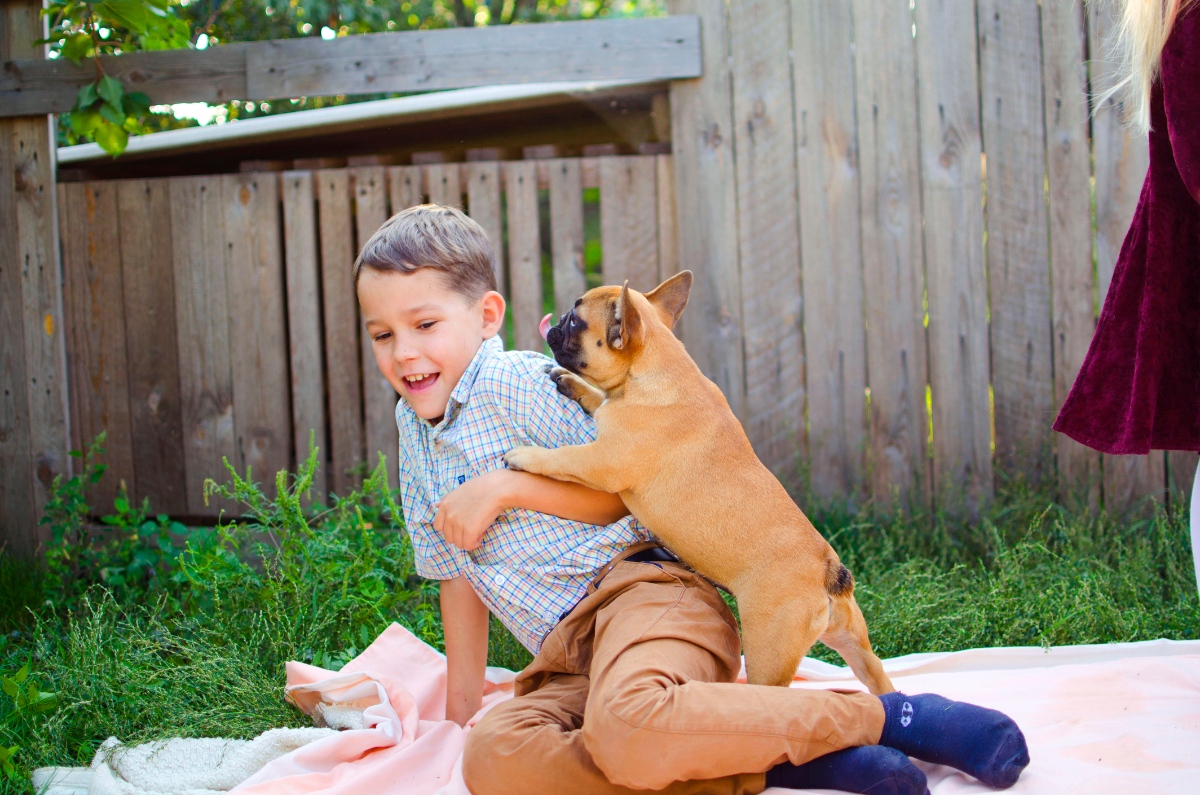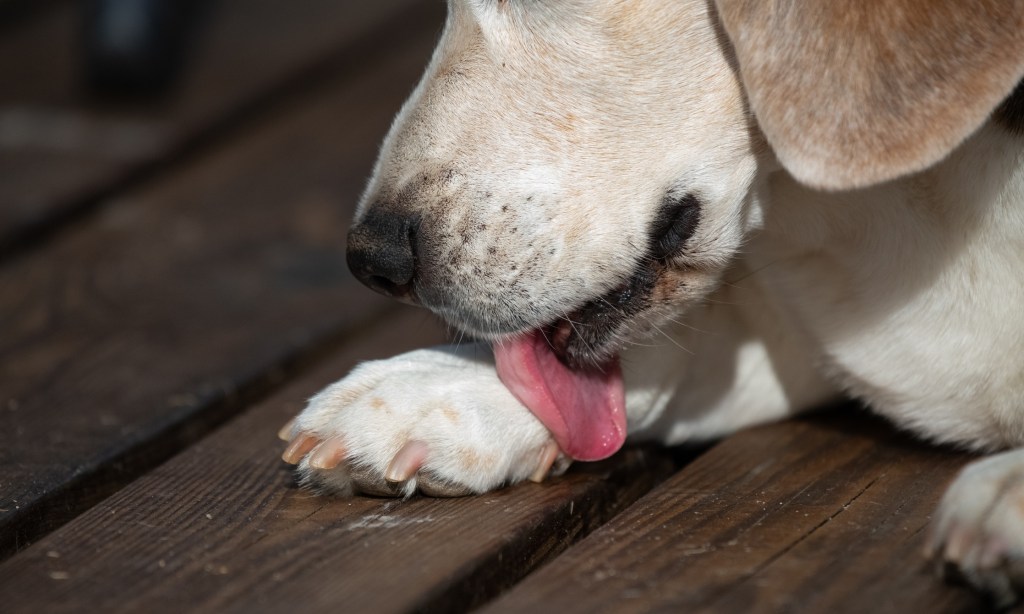Table of Contents
“Hello!” “I’m excited!” “That food looks delicious!”
The arrival of a favorite person, mealtimes, treats, and just about any occasion for excitement are all common reasons a dog might jump on someone. The jumping behavior often starts in puppyhood and becomes a habit because it isn’t corrected. When a small puppy jumps, it’s too cute for some pet parents to ignore, so they inadvertently reward the jumping by giving love, attention, or treats. At their smaller size, jumps from a puppy seem harmless. However, when they are fully grown, dog jumping becomes annoying at best.
With larger dogs especially, jumping up on people can be dangerous when it comes to children, the elderly, and others who might easily be knocked down.
But you can break your dog’s jumping habit, and no matter her current age, now is the perfect time to start. Successfully training your dog not to jump is a combination of rewarding desired behavior and ignoring undesired behavior. Because your dog is initially more likely to show the undesired behavior (jumping), we’ll start there first.
Part 1: Ignoring the jumping
Breaking the jumping habit will require serious mental effort on your part. Any time your dog jumps, it’s important to ignore it. Your dog should not receive any positive feedback from you; that means no petting, no attention, and no treats. The following will have to be consistently practiced over several days or even weeks to solidify the behavior.
Jumping when you walk through the door
- If your dog jumps as you enter, go back out and close the door. Give her a moment to calm down, then try again. Repeat if necessary.
- In response to a jump, turn your back to your dog. The moment her front paws return to the ground, turn around and offer verbal praise.
Toys and playing: If your dog jumps on you while you’re playing with a toy, drop the toy and walk away. Repeat if necessary.
Putting on the leash: If your dog jumps in excitement as soon as you reach for the leash, then set the leash back down and walk away. Repeat if necessary.
Food/treats: If your dog jumps when you’re getting treats or preparing her meal, set the food down (out of reach from your dog) and walk away. Repeat if necessary.
You may have noticed we use the word ‘repeat’ many times within this article. Dog training involves consistency and repetition, which can wear on your patience, but it’s important to hold strong because the payoff is worth it.
Desensitizing
For dogs that become overly excited about the leash and/or food, you can also work on desensitizing them to elicit a more neutral response to those stimuli. At a time when you don’t need it, pick up the object that excites your dog and walk around the house for a few seconds with it, ignoring your dog’s excitement the entire time, then put it back in its place. Repeat this 5-10 times a day for several days, and your dog will learn that it’s not worth it to get super excited every time.
Part 2: Rewarding desired behavior
Instead of jumping, request a desired behavior from your dog during exciting times. Sit or lay down are top choices for many pet parents. While practicing the training tips from Part 1, redirect your dog’s energy by telling her to sit. As soon as she does, reward with verbal praise, love, or treats (with treats, you’ll want to keep a treat pouch on you at all times). For example, when you walk through the front door, tell your dog to sit or roll over for belly rubs, then squat down so you can give her love and attention at ground level.
Make a mental note of all the instances your dog is likely to jump so you can “catch” her when she stops herself from jumping. You may notice times when your dog does a fraction of a jump and quickly remembers the desired behavior. She might even get to the point where she doesn’t jump at all. This can be easy to miss, but it’s important to reward your dog every time she doesn’t jump when she normally would have. Give her plenty of praise and affirmation that she’s doing the right thing, and she will continue to do so.






